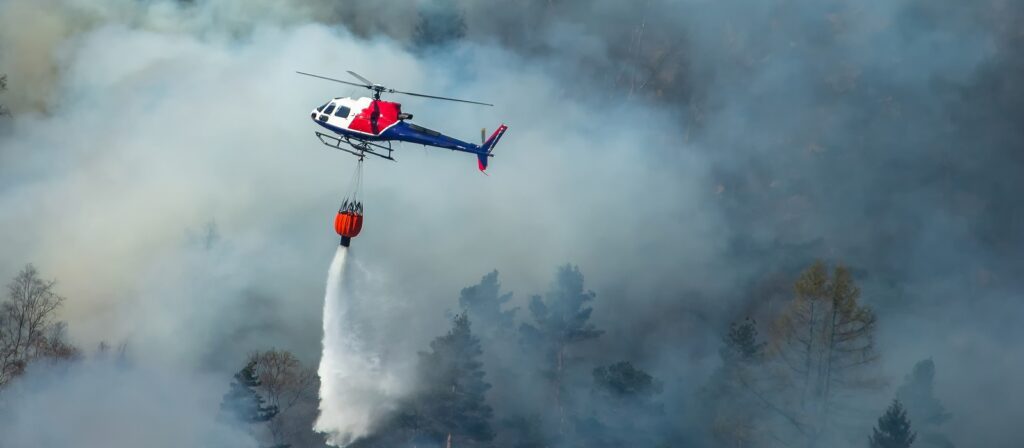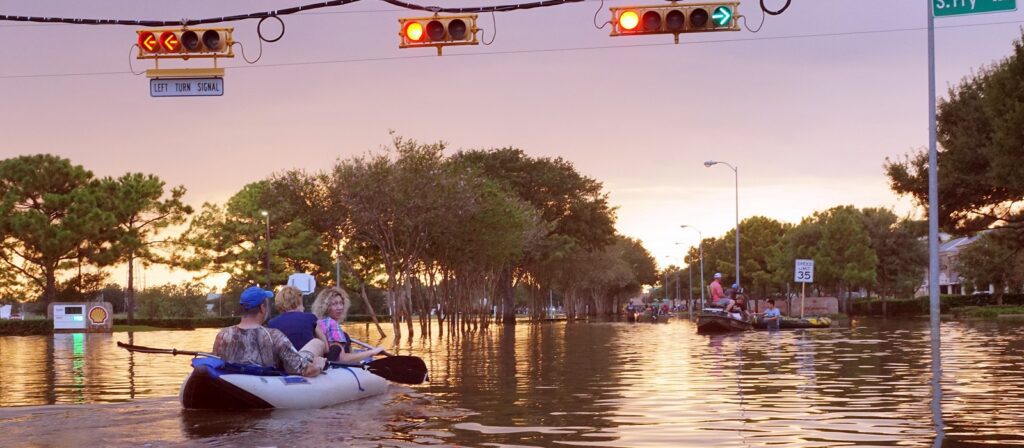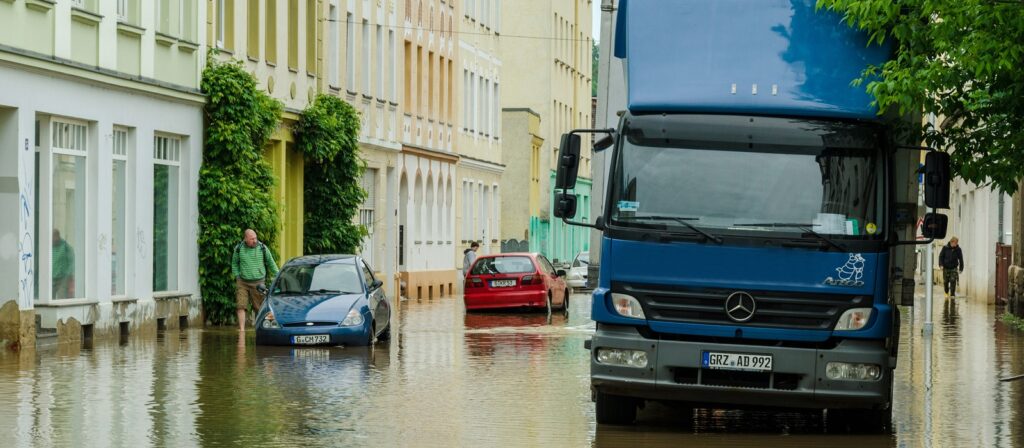Findings of a representative study on extreme weather by German ICMIF member R+V Versicherung show that people want more prevention actions that would protect them from the consequences of extreme weather and that a majority is willing to pay for this themselves, rather than just demanding more investment from the state.
According to the R+V study, the experiences of recent years have sharpened the risk awareness of people in Germany. An overwhelming majority (95%) of the population is convinced that storm damage can affect any house in Germany. Many draw on their own experience: around one in three respondents said they have already been affected by severe weather themselves, usually by storm or heavy rain. This is the result of a representative survey conducted by R+V Versicherung, three years after the flood disaster on the Ahr and in the Eifel. “The shocking images of 2021 have burned themselves into the collective memory: more than 180 dead, hundreds injured and thousands of houses destroyed or damaged,” said Norbert Rollinger, CEO of R+V Versicherung. “The latest images of the floods in Bavaria and Baden-Württemberg (pictured) show that we must expect similar disasters in Germany at any time.”
Just last week, as flood water started to recede in Baden-Württemberg and Bavaria in Germany, the consequences of the floods were becoming increasingly visible. “We currently assume losses of around EUR 100 million for R+V policyholders,” said R+V Composite Board Member Klaus Endres. The final extent of the damage is far from clear, at R+V numerous calls were still being received from policyholders. At that time, mainly damage to buildings was being reported, including many major losses. “Although you keep seeing pictures of vehicles pushed into each other in the media, motor vehicles currently account for only about five percent of the reported damage,” reported Endres.
“The water had an incredible destructive force,” explained the R+V composite board member as he was getting a picture of the disaster for himself on site. “Those affected now need help quickly and easily. That is our top priority.” To ensure that this runs smoothly, all tasks are being coordinated in R+V’s flood operations centre – from incoming calls and claims processing to the deployment of experts, service providers and claims adjusters on site. R+V has brought together experts from all over Germany for this purpose.
Freeze on construction in high risk areas
The desire for prevention is great – this is a clear result of the study: 87% of those surveyed would like to see more government investment in flood protection. Around two-thirds of citizens are in favour of a halt to construction in flood-prone risk areas. “In view of climate change, politicians must act urgently. They have a duty of care for citizens,” emphasised R+V CEO Rollinger. “If too many areas are sealed, dilapidated dikes continue to deteriorate and new buildings in flood areas are approved, there is an increasing threat of greater damage in the future.”
In addition to the state, citizens can also actively take precautions. Therefore, R+V wanted to know: What do the respondents themselves think about prevention? More than half (55%) are willing to spend money on storm protection measures. Almost one in three has already taken preventive measures. “Good prevention helps to avoid damage or at least limit its extent,” said Rollinger. “Especially in the case of flooding, there are many ways to reduce the risk of water penetration.” These range from thresholds in front of stairways to backflow flaps and highly watertight basement windows. The R+V study shows a great desire for more orientation here. Sixty seven percent of people are in favour of specifications for storm-adapted construction and renovation.
Insurance cover must remain affordable
“Weather extremes are already occurring more and more frequently and causing damage,” said Rollinger. Prevention and protection in the event of a loss must work together. “Our primary goal as an insurer is to protect citizens against natural hazards as comprehensively as possible, which must remain affordable.” At R+V, the opt-out model has been standard in residential building and household contents insurance for years. This means that the insured person must consciously and actively opt out of protection against natural hazards if he or she does not want it. Accordingly, 70% of customers in R+V’s portfolio have taken out residential building insurance with the natural hazards component, and in new business the figure is as high as almost 80%. By comparison, the figure is around 50% industry-wide.
“In view of the challenges of climate change, we as a society must draw consequences,” said R+V CEO Rollinger. “A joint initiative by the state, citizens and insurers is needed.”
For the representative survey, R+V surveyed 1,000 people online from 2 May to 3 May 2024.
Image source: R+V/iStock






